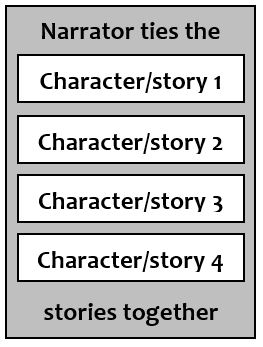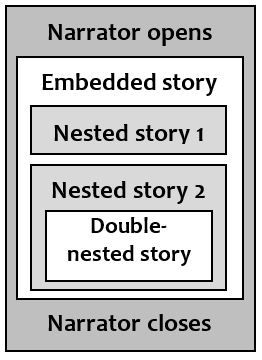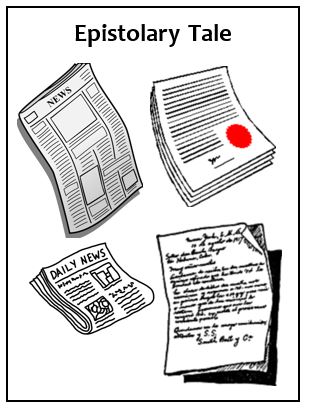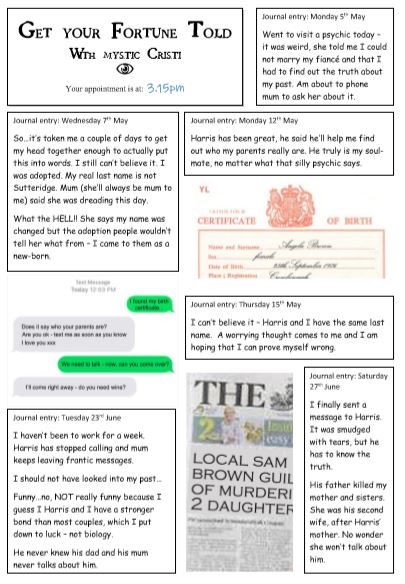Framing is a literary method of embedding one story into another – a story within a story. It has the effect of adding layers of complexity to your story; of making it more intricate and therefore (provided you do it skilfully), more interesting to the reader.
How do you add a framework your story?
A simple form of framing is a literary form of placing ‘bookends’ at either end of a story. In the opening scene, the narrator introduces readers to important characters and the setting and in the closing scene, brings the story full-circle to the opening scene.
This works well with stories set across multiple generations, where a character from the present can open and close the embedded story (or stories) of their ancestors’ past.

This type of framing can also be used to good effect in a story where the survival of the main protagonist is in jeopardy throughout but, the author allows the reader to know they survived (possibly unscathed/possibly not) by virtue of the fact they are recounting what happened. In this case, the story will have started at its endpoint and the narrative takes you back through the events that led up to that point.
A good visual example of this is the movie Titanic, the elderly Rose recounts her tale as a passenger on the tragic ship, crossing the Atlantic Ocean. The reader is then time-slipped into the year 1912 where Rose is a young girl. The elderly Rose interjects to recount her experiences to the reader and the film ends back with the elderly Rose of today, so that even as the story is begins, you know Rose survives.
The film ‘The Princess Bride’, is story that opens with a grandfather reading a bedtime story to his grandson in the modern day world – the bedtime story is the embedded, main story line and is set in an enchanted land. Narrative periodically jumps back to interactions between the grandfather and son and film is rounded off with the grandson having enjoyed the story and the grandfather hinting at a possible connection between himself and the fantasy characters in the story.
Bookend Frame exercise
Write a 500 word ‘bookend’ style frame story. Here are some ideas that you could use, or try one of your own.
Do feel free to change the character names.
Talli is about to get married, but an event from her past has to be reconciled before she can walk down the aisle. Use the ‘bookends’ to show her before the wedding and after the wedding (if she goes through with it). The embedded story should be that of her childhood event, showing the reader why she is struggling with her decision at this point in her life.
Max was pronounced dead at eleven-hundred hours – one hour after he said ‘I do’ to Louise. The ghost of Max is narrating the days or hours up to his death and the answer to ‘who killed him?’
Adoptee, Elspeth has been sent a box of letters from an unknown source. The letters tell the story of her, as yet unknown, past.
Multiple Narratives


In Canterbury Tales, Geoffrey Chaucer introduces a collection of different characters, each with their own story and distinct character. The pilgrim who meets these characters, links together the various storytellers’ narratives and their relationships with each other.
In this type of framework, multiple narratives occur one after another but, in a far more complex frame system, stories can be ‘nested’, whereby the reader is introduced to an embedded story by the narrator and then, a character within that embedded story can take the reader into a further story, or set of stories, before coming back to their own stories.
There are no limits to how many times or how complex the framework and nesting can be.
Epistolary tale
This is a story written as a series of documents, such as journals, exchange of letters and even newspaper articles.
Dracula by Bram Stoker is a well-known example and The Jolly Postman by Janet and Allan Ahlberg, where the different stories are told through a series of letters (actual letters in envelopes within the book), delivered by a jolly postman. Other examples are Bridget Jones Diary by Helen Fielding and The Secret Diary of Adrian Mole by Sue Townsend.

Epistolary Tale exercise
Choose one of the options below to create your epistolary tale of between 500 and 1500 words:
From your local newspaper, find a ‘reader’s letter’ that feels like there could be an ongoing saga and create a 500 word story through a series of linked letters that appear in a paper.
Or, check the ‘searching for love’ advertisements and create a story around the posts and the people posting them.
Or your story could be made up of a series of journal entries, Tweets or Tinder entries!

If you fancy doing something a bit different, get an A4 sheet of paper and paste several cut-out letters from newspapers onto it and create a visual story.
Here’s an example of one that I made – you can also download a pdf copy of my Visual Epistolary tale in A4 that can be read more easily.
BLOG Epistolary example download exampl epistolary tale.
I would love to see your stories, please do post them in the comments below.
